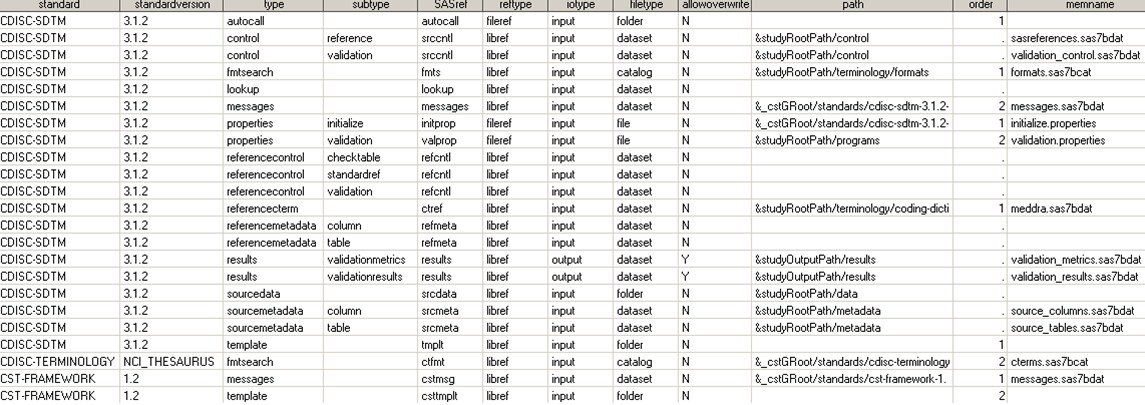Key SAS Clinical Standards Toolkit Components
Framework macros and
SAS macros specific to a standard provide the foundation for the SAS
Clinical Standards Toolkit functionality. Three other SAS Clinical
Standards Toolkit components are also noteworthy:
The SAS Clinical Standards
Toolkit provides a set of driver programs (non-macro SAS code) that
illustrate all of the basic SAS Clinical Standards Toolkit functions
using sample data provided by SAS. These drivers can serve as templates
for the processes that you want to develop. These drivers might be
submitted as batch or interactive processes. They can be found in
the programs subfolder for each standard (for the relative
location of this folder, see Folder Hierarchy for CDISC ADaM 2.1 Sample). For a more complete
description of what these drivers do, see Using the SAS Clinical Standards Toolkit.
The SAS Clinical Standards
Toolkit provides a series of framework properties files and properties
files specific to a standard (such as initialization, validation,
and report properties files). You can use these files to define global
macro variables and to set their default values. These typically can
be found in the same folders as the driver programs. Use of these
property files is optional but recommended, and you can add your own
global macro variables as needed.
Perhaps the single
most important file used by the SAS Clinical Standards Toolkit is
the SASReferences data set. The SASReferences data set captures all
the input and output file library and file references associated with
any process. Here is a sample:
Sample SASReferences Data Set (CDISC SDTM 3.1.2 Validation
Process)

A
complete discussion of the SASReferences data set is provided in Chapter 6, “SASReferences File,” in the SAS
Clinical Standards Toolkit: User's Guide.
The SAS Clinical Standards Toolkit defines a standard SASReferences
data set for each supported standard (found in the
global standards library directory/standards/standard/control directory).
Copyright © SAS Institute Inc. All rights reserved.